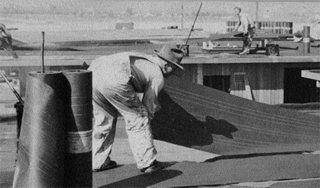New Faces for Old Roofs - Page 2
Requirements at local levels
Several cities have developed their own cool-roof requirements in support of their state codes, including New York City, Philadelphia, and Washington, D.C. The Los Angeles City Council also passed an ordinance to its city building code in December 2013 that requires all new and refurbished homes in Los Angeles to have a cool roof. The new cool roof requirement effects all homes in Los Angeles that repair or replace 50 percent or more of the roof.
The move was sparked by a UCLA study that projected a 3.7 to 5.4 degree rise in local temperature would transpire by 2050. Between now and 2050, the number of ‘extreme heat’ days (during which temperatures rise above 95 degrees Fahrenheit) is expected to triple in downtown Los Angeles, and quadruple in the San Fernando and San Gabriel valleys.
“The changes our region will face are significant, and we will have to adapt,” says UCLA Professor Alex Hall, author of the study. Climate Resolve worked with the mayor’s office, the Los Angeles City Council, and the Department of Water and Power to expand existing incentives for homeowners to offset any cost increases associated with alternative roofing materials.
“We sort of looked at, well, what can we do locally to offset some of that warming,” says David Fink, director of campaigns at advocacy organization Climate Resolve. “The obvious thing was to alter much of our paved surfaces, and that really comes down to roofs and streets.”
To be considered a cool roof, roofing products used for compliance with the Title 24 standards are required to be tested and labeled by the Cool Roof Rating Council (CRRC), the supervisory entity responsible for certifying cool roof products.
Enforcement to the Energy Efficiency Standards rests with local city or county building departments. Since California law requires building permits for both new construction and alterations and renovations, your local office may use a ‘Certificate of Compliance’ that will be used to verify compliance to Title 24.
Evaluating flat-roof systems
 |
|
|
So what does that mean for roofing technologies? In the old days, the tar-and-gravel built-up roofing system was the industry standard because it was cost effective, and progressive, more effective waterproofing options were still years away from reaching the heart of the marketplace.
For tar and gravel, the roofing system originally installed on all Eichler homes, installers lay down a base sheet that is nailed in place and then covered with layers of felt hot-mopped together with tar (on the original roofs) and later asphalt. The roof is then covered with a layer of gravel.
In spite of its budget pricing, the tar-and-gravel system has declined over the past two decades, its components impacted by emissions regulations. This pointed the way to reduced longevity and oftentimes to repair or replacement by the ten-year mark.
“People have moved away from tar-and-gravel roofs because they are constructed with asphalt, which is heated to 475 degrees, and emits VOCs that are polluting the environment,” says Will Knapp, president of Central Roofing in Gardena, California. “It’s just outdated technology.”
Modified bitumen, an evolution of asphalt roofing, proved to be a significant improvement over the tar-and-gravel system. It was followed by the single-ply solution, which used a layer of flexible polyvinyl thermal membrane to form a watertight barrier; and foam, which applied sprayed polyurethane foam onto the roof surface topped with elastomeric coating.
Photography: David Toerge, Patrick Glilooly/MIT; and courtesy in.it.studios Ltd., Xunlight, Dura-Foam Solar Center, Chandler’s Roofing, Cal-Pac Roofing, Worrell Roofing
STORY RESOURCES
Dura-Foam Roofing
dura-foam.com
Worrell Roofing
650-494-8166
Chandler’s Roofing
chandlersroofing.com
Central Roofing
centralroof.com
• For additional information on ‘cool roofs’ and flat and low-sloped roofing systems, contact the Eichler Network’s participating roofing companies.




